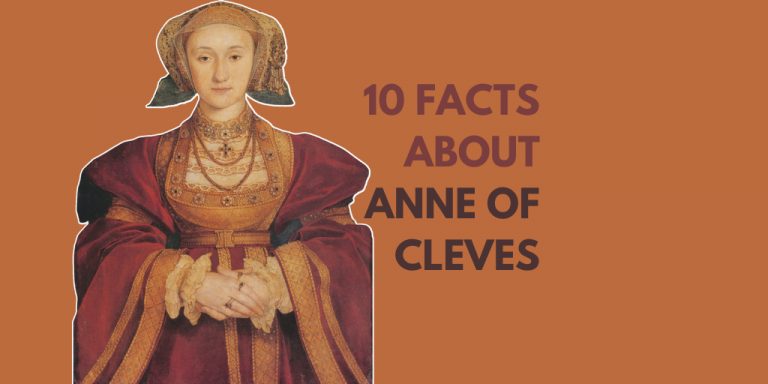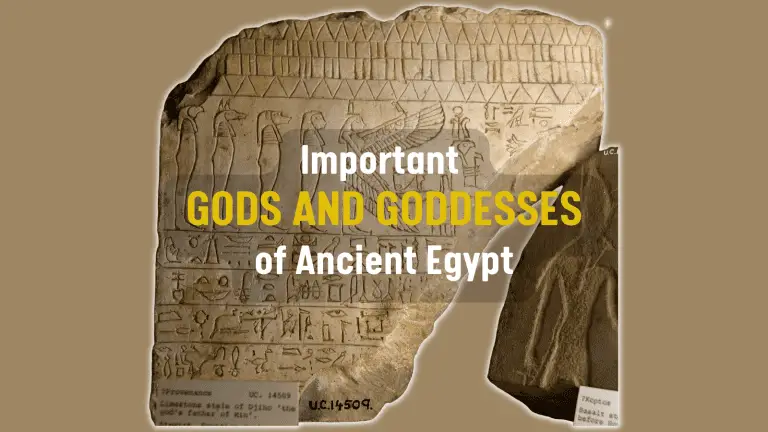Anne Boleyn’s Final Burial Place: Was she misidentified?
Anne Boleyn was beheaded on Tower Green on the morning of May 19th, 1536. She had been found guilty of treason, adultery, and incest. Henry VIII brought in the fabled executioner of Calais to do the gruesome work. He removed Anne’s head with one clean stroke of his sword.
Anne Boleyn was buried in the royal chapel of St Peter ad Vincula within the Tower of London. She was buried in an old arrow chest as there was no provision for a proper coffin.
The beheading of Anne Boleyn was an unprecedented event in English history. Never before had a Queen of England been executed. Her downfall was swift and brutal.
On the 1st of May, Anne watched the traditional May Day jousts at Greenwich sat next to the king. But halfway through, Henry VIII abruptly stood up and left. It was the final time she ever saw her husband. The next day the Queen was arrested and sent by barge to the Tower.
[/et_pb_text][/et_pb_column][/et_pb_row][et_pb_row _builder_version=”4.7.7″ _module_preset=”default”][et_pb_column type=”4_4″ _builder_version=”4.7.7″ _module_preset=”default”][et_pb_text _builder_version=”4.7.7″ _module_preset=”default”]Preparation of Anne Boleyn’s body
[/et_pb_text][/et_pb_column][/et_pb_row][et_pb_row _builder_version=”4.7.7″ _module_preset=”default”][et_pb_column type=”4_4″ _builder_version=”4.7.7″ _module_preset=”default”][et_pb_text _builder_version=”4.7.7″ _module_preset=”default”]The invited crowd soon disbursed after the execution took place. Anne’s ladies in waiting took control of their mistress’s body, allowing no man to touch her.
A problem was imminently identified. No provision had been made for a coffin.
It’s unclear where the fault for this arose.
Was Henry VIII responsible? In which case, his chief minister, Thomas Cromwell (widely believed to be responsible for engineering Anne Boleyn’s downfall), would have been at fault. Or it may have been the responsibility of Sir William Kingston, Constable of the Tower of London.
A solution was found with an old elm arrow chest from the armoury being brought.
Her body was undressed, covered in white linen, and placed in the chest. Anne’s head was placed in a similar white covering and was carried by one of her ladies.
The body was taken a matter of yards from the execution site to the royal chapel of St Peter ad Vincula.
[/et_pb_text][/et_pb_column][/et_pb_row][et_pb_row _builder_version=”4.7.7″ _module_preset=”default”][et_pb_column type=”4_4″ _builder_version=”4.7.7″ _module_preset=”default”][et_pb_text _builder_version=”4.7.7″ _module_preset=”default”]St Peter ad Vincula (St Peter in Chains)
[/et_pb_text][/et_pb_column][/et_pb_row][et_pb_row _builder_version=”4.7.7″ _module_preset=”default”][et_pb_column _builder_version=”4.7.7″ _module_preset=”default” type=”4_4″][et_pb_image src=”http://historywithhenry.com/wp-content/uploads/2021/10/Tower_of_London_Chapel_of_St_Peter_ad_Vincula-scaled.jpg” _builder_version=”4.7.7″ _module_preset=”default” alt=” Anne Boleyn’s Final Burial Place ” title_text=” Anne Boleyn’s Final Burial Place ” align=”center” width=”73%” hover_enabled=”0″ sticky_enabled=”0″][/et_pb_image][/et_pb_column][/et_pb_row][et_pb_row _builder_version=”4.7.7″ _module_preset=”default”][et_pb_column type=”4_4″ _builder_version=”4.7.7″ _module_preset=”default”][et_pb_text _builder_version=”4.7.7″ _module_preset=”default”]St Peter ad Vincula is the parish church of the Tower of London. The original church was outside the boundaries of the Tower and was probably established in 1100. The building that stands there today dates from the Tudor era.
In many ways, it is a Tudor mausoleum containing many of the most famous names to have met their end on the scaffold.
As well as the body of Anne Boleyn, it is the burial place of Catherine Howard, Lady Jane Grey, Thomas Cromwell, Thomas More, Lady Rochford, The Countess of Salisbury, The Earl of Essex, Guildford Dudley, Bishop Fisher, Edward Seymour, Thomas Seymour, John Dudley, Richard Empson, and Edmund Dudley.
Also buried there are the five men found guilty of adultery with Anne Boleyn; George Boleyn, Mark Smeaton, Henry Norris, Francis Weston, and William Brereton.
Thomas Babington Macaulay said about the chapel in his 1848 work a History of England.
In truth, there is no sadder spot on the earth than that little cemetery. Death is there associated, not, as in Westminster Abbey and Saint Paul’s, with genius and virtue, with public veneration and with imperishable renown; not, as in our humblest churches and churchyards, with everything that is most endearing in social and domestic charities; but with whatever is darkest in human nature and in human destiny, with the savage triumph of implacable enemies, with the inconstancy, the ingratitude, the cowardice of friends, with all the miseries of fallen greatness and of blighted fame. Thither have been carried, through successive ages, by the rude hands of gaolers, without one mourner following, the bleeding relics of men who had been the captains of armies, the leaders of parties, the oracles of senates, and the ornaments of courts.
Read more on why Henry VIII turned into a tyrant in our article by clicking here
[/et_pb_text][/et_pb_column][/et_pb_row][et_pb_row _builder_version=”4.7.7″ _module_preset=”default”][et_pb_column type=”4_4″ _builder_version=”4.7.7″ _module_preset=”default”][et_pb_text _builder_version=”4.7.7″ _module_preset=”default”]The burial of Anne Boleyn
[/et_pb_text][/et_pb_column][/et_pb_row][et_pb_row _builder_version=”4.7.7″ _module_preset=”default”][et_pb_column type=”4_4″ _builder_version=”4.7.7″ _module_preset=”default”][et_pb_text _builder_version=”4.7.7″ _module_preset=”default”]Anne Boleyn’s body rested in the chapel of St Peter ad Vincula for serval hours before the burial took place.
Again it seemed as though an organisational failure occurred, and there was no one available to lift the flagstones in the chapel and dig the grave.
It was the last in the series of failures. The execution itself was postponed twice before it finally took place.
All of Anne’s clothing and jewellery were removed and returned to the king. He paid compensation to the officials of the Tower who would usually expect to receive such items as part of their compensation.
Finally, sometime in the late afternoon of the 19th May, Anne Boleyn was buried in front of the altar of St Peter ad Vincula. It was reported to be a shallow grave.
Anne Boleyn’s head was buried with her body; it wasn’t put on display like the heads of many “traitors.”
[/et_pb_text][/et_pb_column][/et_pb_row][et_pb_row _builder_version=”4.7.7″ _module_preset=”default”][et_pb_column type=”4_4″ _builder_version=”4.7.7″ _module_preset=”default”][et_pb_text _builder_version=”4.7.7″ _module_preset=”default”]Legends surrounding the burial of Anne Boleyn
[/et_pb_text][/et_pb_column][/et_pb_row][et_pb_row _builder_version=”4.7.7″ _module_preset=”default”][et_pb_column type=”4_4″ _builder_version=”4.7.7″ _module_preset=”default”][et_pb_text _builder_version=”4.7.7″ _module_preset=”default”]There are a considerable number of conspiracy theories surrounding the remains of Anne Boleyn.
The more unbelievable suggest that her entire body was removed from the Tower of London and buried elsewhere. As we will see in a moment, it is a tantalising prospect.
The most famous legend concerns Anne’s Boleyn heart. It is said that Anne made the request of one of her ladies in waiting that her heart be buried in St Mary’s Church, Erwaton in Suffolk. Apparently, Anne spent time there as a child as her uncle owned the mansion, and the church was on its grounds. There is no evidence that Anne spent any time there at all.
Victorian-era renovations of St Mary’s discovered a heart-shaped tin in the wall of the chancel. The original contains were gone, and just dust remained. The tin was reburied and marked with a plaque.
This story is more legend than truth. It would seem strange that the removal of the heart wasn’t documented, considering the very detailed accounts of the events surrounding Anne’s execution.
The Victorian restoration and rediscovery of Anne Boleyn’s body
[/et_pb_text][/et_pb_column][/et_pb_row][et_pb_row _builder_version=”4.7.7″ _module_preset=”default”][et_pb_column type=”4_4″ _builder_version=”4.7.7″ _module_preset=”default”][et_pb_text _builder_version=”4.7.7″ _module_preset=”default”]In 1876 restoration work was being undertaken on St Peter ad Vincula.
As part of the work, the remains of those buried in the altar were excavated, and attempts were made to identify each of them.
It was already known this area was where the remains of two queens were buried; Anne Boleyn and Catherine Howard. In addition, there were other significant burials, including Edward Seymour, Duke of Somerset, former Lord Protector and John Dudley, Duke of Northumberland, who led Edward VI’s government after Seymour’s fall. Also suspected to be in that area was George Boleyn, Lord Rochford.
Dr Mouat, part of the excavation team, wrote this in his notes about the event.
The bones found in the place where Queen Anne Boleyn is said to have been buried are certainly those of a female in the prime of life, all perfectly consolidated and symmetrical, and belong to the same person.
The bones of the head indicate a well-formed round skull, with an intellectual forehead, straight orbital ridge, large eyes, oval face, and rather square full chin. The remains of the vertebrae, and the bones of the lower limbs, indicate a well-formed woman of middle height, with a short and slender neck. The ribs show depth and roundness of chest. The hand and feet bones indicate delicate and well-shaped hands and feet, with tapering fingers and a narrow foot.
They are all consistent with the published descriptions of the Queen, and the bones of the skull might well belong to the person portrayed in the portrait by Holbein, in the collection of the Earl of Warwick.
The bodies were placed in proper coffins with lead linings and inscribed with the appropriate name. There are now markers on the floor of St Peter ad Vincula that identify where the remains of each person lie.
[/et_pb_text][/et_pb_column][/et_pb_row][et_pb_row _builder_version=”4.7.7″ _module_preset=”default”][et_pb_column type=”4_4″ _builder_version=”4.7.7″ _module_preset=”default”][et_pb_text _builder_version=”4.7.7″ _module_preset=”default”]Was Anne’s body wrongly identified?
[/et_pb_text][/et_pb_column][/et_pb_row][et_pb_row _builder_version=”4.7.7″ _module_preset=”default”][et_pb_column type=”4_4″ _builder_version=”4.7.7″ _module_preset=”default”][et_pb_text _builder_version=”4.7.7″ _module_preset=”default”]The prominent historian Alison Weir believes that the Victorian wrongly identified Anne Boleyn’s body.
She notes some problems with Dr Mouat’s account and conflicting evidence.
• No portrait of Anne Boleyn by Holbein is known to have survived. Mouat could have been referring to a portrait incorrectly identified as Anne Boleyn.
• Anne Boleyn was described as having a long neck.
The victorian team believed they managed to identify Anne Boleyn, Edward Seymour, John Dudley, Jane Rochford and Margaret Pole, Countess of Salisbury.
There was no sign of the body of George Boleyn. It was believed he had been buried next to his sister, however it seems that was not the case.
You will notice that there is one other noticeable omission; Catherine Howard. The original excavation team suggested that because Catherine was so young, her bones had not yet hardened and so had decomposed to nothing.
One of the female skeletons was considerably older than the others; we can confidently say that skeleton belonged to Margaret Pole, Countess of Salisbury.
Alison Weir believes that the skeleton identified as Anne was, in fact, Catherine Howard and that identified as Lady Rochford was Anne Boleyn. The argument being that Lady Rochford wasn’t of such significant status to be buried in the altar, and she may lie next to her husband George elsewhere in the chapel. However, their executions were several years apart.
The fact there is a body missing throws up exciting possibilities. Could it be that the legends associated with Anne’s body being removed from the Tower of London are, in fact, true?
[/et_pb_text][/et_pb_column][/et_pb_row][et_pb_row _builder_version=”4.7.7″ _module_preset=”default”][et_pb_column type=”4_4″ _builder_version=”4.7.7″ _module_preset=”default”][et_pb_text _builder_version=”4.7.7″ _module_preset=”default”]The mystery of the annual flower delivery
[/et_pb_text][/et_pb_column][/et_pb_row][et_pb_row _builder_version=”4.7.7″ _module_preset=”default”][et_pb_column _builder_version=”4.7.7″ _module_preset=”default” type=”4_4″][et_pb_image src=”http://historywithhenry.com/wp-content/uploads/2021/10/Tower_of_London_from_the_Shard_8515883950-1-scaled.jpg” _builder_version=”4.7.7″ _module_preset=”default” alt=” Anne Boleyn’s Final Burial Place ” title_text=” Anne Boleyn’s Final Burial Place ” align=”center” width=”79%” hover_enabled=”0″ sticky_enabled=”0″][/et_pb_image][/et_pb_column][/et_pb_row][et_pb_row _builder_version=”4.7.7″ _module_preset=”default”][et_pb_column type=”4_4″ _builder_version=”4.7.7″ _module_preset=”default”][et_pb_text _builder_version=”4.7.7″ _module_preset=”default”]On the 19th of May each year a bunch of roses gets delivered to the Tower of London. They come with a request to be placed on Anne Boleyn’s marker in the chapel. This delivery has occurred for the last 150 years.
The flowers were always delivered anonymously.
A great mystery surrounded this delivery until the former director-general of the Tower, Major General Chris Tyler, solved the puzzle with years of research.
A family called Bullen in Kent traces their ancestry back to the Boleyns (I can only assume via Mary Boleyn). Before them, they and their ancestors have been carrying out the delivery, and they were carrying on the tradition.
[/et_pb_text][/et_pb_column][/et_pb_row][et_pb_row _builder_version=”4.7.7″ _module_preset=”default”][et_pb_column type=”4_4″ _builder_version=”4.7.7″ _module_preset=”default”][et_pb_text _builder_version=”4.7.7″ _module_preset=”default”]





